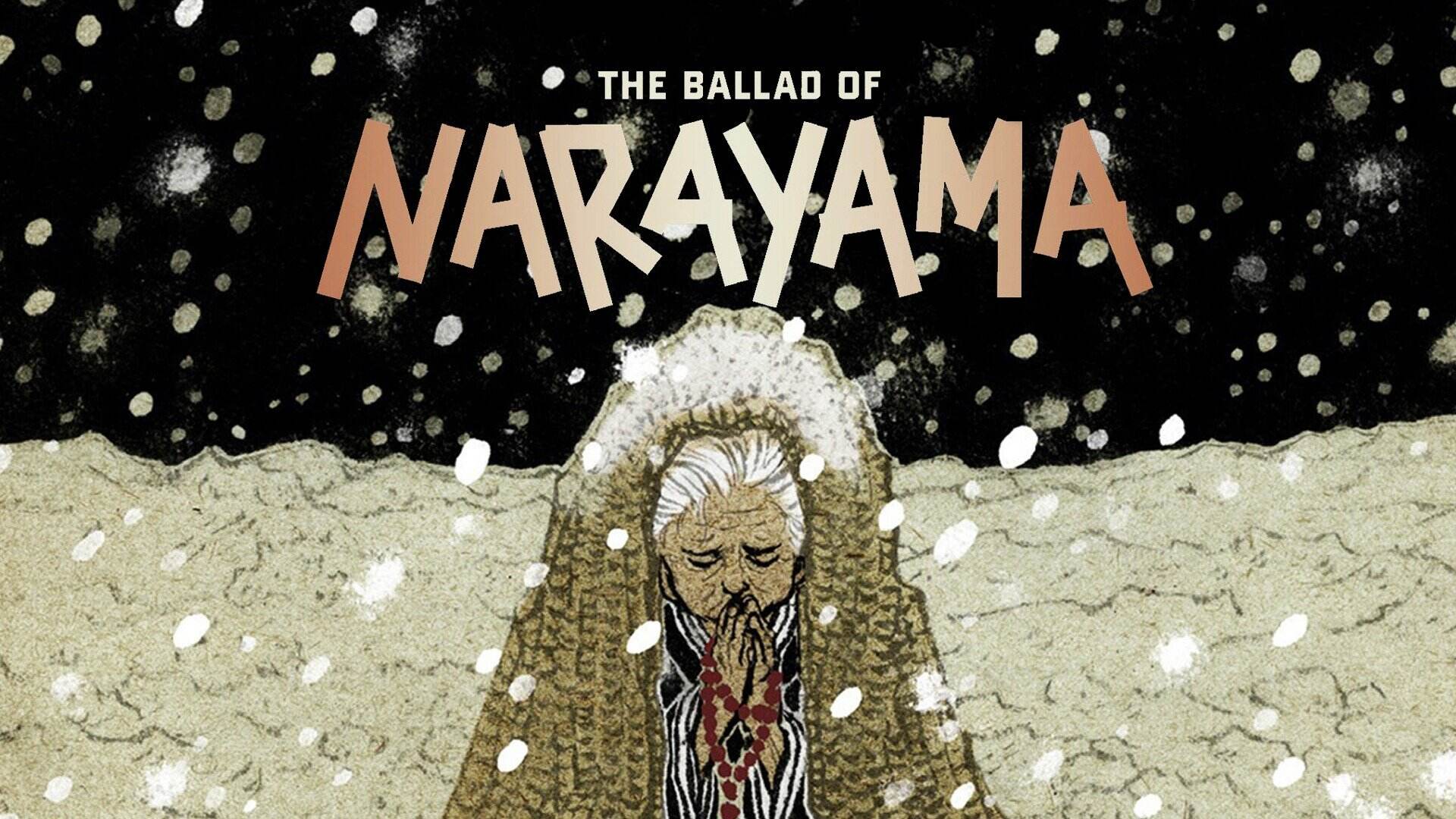
The Ballad of Narayama is a captivating cinematic masterpiece that has captured the hearts of moviegoers around the world. Released in 1983, this Japanese film directed by Shohei Imamura tells the poignant and haunting story of a remote mountain village where custom dictates that when a person reaches the age of 70, they must be taken to the summit of Mount Narayama to die. The film has gained critical acclaim for its raw and visceral portrayal of life and death, intertwining themes of tradition, love, and survival. With its stunning visuals, powerful performances, and thought-provoking storyline, The Ballad of Narayama has solidified its place as one of cinema’s most remarkable works of art. In this article, we will take a deep dive into the film and uncover 35 fascinating facts that make it a must-watch for any movie enthusiast.
Key Takeaways:
- “The Ballad of Narayama” is a captivating Japanese movie that won the prestigious Palme d’Or at the Cannes Film Festival. It explores themes of tradition, sacrifice, and the resilience of the human spirit.
- This timeless masterpiece delves into the complexities of human relationships and societal norms, challenging viewers to reflect on love, sacrifice, and the impact of cultural traditions.
The Ballad of Narayama is a Japanese movie.
The 35 Facts about the movie Ballad of Narayama starts off with this captivating detail. Directed by Shohei Imamura, this 1983 film is renowned for its exploration of rural Japanese life in the 19th century.
It is based on a novel.
The movie Ballad of Narayama is an adaptation of the novel “Narayama Bushiko” by Shichiro Fukazawa. The story follows an elderly woman named Orin who must face the tradition of traveling to a mountain to die.
The movie won the Palme d’Or at the Cannes Film Festival.
In recognition of its cinematic brilliance, the Ballad of Narayama was awarded the prestigious Palme d’Or at the Cannes Film Festival in This provided international acclaim for its captivating storytelling and cinematography.
There was a remake of the movie.
In 2013, a remake of the Ballad of Narayama was released, directed by Shohei Imamura’s son, Shohei Imamura II. While the original remains a classic, the remake aimed to bring the story to a new generation of viewers.
The movie explores themes of tradition and sacrifice.
The Ballad of Narayama delves deep into the themes of tradition and sacrifice, as the characters are confronted with the moral dilemmas of adhering to cultural norms and maintaining personal integrity.
It showcases the beauty of Japanese landscapes.
Throughout the film, the stunning cinematography captures the breathtaking beauty of the Japanese countryside. The visuals enhance the narrative by immersing viewers in the rural setting of the story.
The movie is a blend of drama and tragedy.
Ballad of Narayama seamlessly combines elements of drama and tragedy, creating a poignant and emotionally stirring experience for the audience. The film’s storytelling evokes a range of emotions, from sorrow to a sense of cultural exploration.
The movie has a poetic and lyrical style.
The Ballad of Narayama is known for its poetic and lyrical style of storytelling. The dialogue and narrative structure contribute to the film’s unique and artistic portrayal of the characters’ lives and struggles.
It examines the complexities of human relationships.
The movie delves into the complexities of human relationships, particularly within the context of a traditional society. It explores familial bonds, love, and the consequences of personal choices.
The film received critical acclaim.
The Ballad of Narayama was met with critical acclaim upon its release. It was praised for its authenticity, thought-provoking themes, and outstanding performances by the cast.
The movie portrays the harsh realities of life.
Through its compelling narrative, the Ballad of Narayama presents the harsh realities of life in a bygone era. It sheds light on the challenges and struggles faced by individuals in a society governed by strict traditions.
The movie has been hailed as a masterpiece of world cinema.
With its powerful storytelling and masterful direction, the Ballad of Narayama has earned its status as a masterpiece of world cinema. Its impact on the film industry is undeniable.
There are thought-provoking moral dilemmas in the movie.
The movie Ballad of Narayama poses thought-provoking moral dilemmas as the characters grapple with the moral implications of their actions and the impact on their community.
The film’s soundtrack adds depth to the storytelling.
With its evocative score, the Ballad of Narayama’s soundtrack enhances the emotional impact of the story. The music heightens the tension, captures the beauty of the landscapes, and immerses viewers in the film’s world.
The Ballad of Narayama has inspired other filmmakers.
The unique and powerful storytelling in the movie has influenced other filmmakers, inspiring them to explore similar themes of tradition, sacrifice, and cultural complexities in their own works.
The movie’s cinematography is visually stunning.
The visual aesthetics of the Ballad of Narayama are awe-inspiring. The meticulous cinematography captures the essence of every scene, creating a visually stunning experience for the viewers.
It highlights the struggles of marginalized individuals.
Ballad of Narayama sheds light on the struggles of marginalized individuals within society. The film provides a platform for discussions on social issues and the impact of cultural norms on different groups of people.
The movie’s screenplay is a work of art.
The screenplay of the Ballad of Narayama is masterful and carefully crafted. It skillfully narrates the story, immersing the audience in the characters’ lives and creating a deep emotional connection.
The film portrays the resilience of the human spirit.
Despite the hardships and challenges faced by the characters, the Ballad of Narayama showcases the indomitable spirit of resilience and the will to survive against all odds.
The movie’s performances are outstanding.
The cast delivers exceptional performances in the Ballad of Narayama, bringing the characters to life with depth and authenticity. Their portrayals add layers of complexity to the narrative and make the story even more compelling.
It explores the impact of societal norms on individuals.
Through the lens of the characters’ stories, the Ballad of Narayama examines the profound impact of societal norms on individuals, questioning the stifling effects of rigid traditions.
The movie’s costumes and set designs are meticulously detailed.
In its attention to detail, the Ballad of Narayama showcases meticulously crafted costumes and set designs. The visual elements provide a glimpse into the rich cultural and historical context of the story.
It presents a poignant portrayal of aging and mortality.
The movie delves into the sensitive topic of aging and mortality, offering a poignant exploration of the human experience and the inevitable passage of time.
The film’s narrative is filled with symbolism.
Symbolism plays a significant role in the Ballad of Narayama, enriching the narrative and offering deeper layers of meaning for viewers to interpret and contemplate.
It showcases the power of storytelling to convey universal truths.
Through its captivating storytelling, the Ballad of Narayama reveals universal truths about the human condition, emphasizing the power of narratives to transcend cultures and evoke profound emotions.
The movie challenges societal norms and expectations.
By questioning and challenging societal norms, the Ballad of Narayama encourages viewers to reflect on the limitations imposed by cultural expectations and the potential for personal growth and liberation.
It is a cinematic exploration of life and death.
Life and death are central themes in the Ballad of Narayama, prompting introspection on the human experience and the fragility of existence.
The movie captures the essence of Japanese folklore.
Deeply rooted in Japanese folklore and mythology, the Ballad of Narayama weaves elements of traditional storytelling into its narrative, adding a layer of cultural richness to the film.
It confronts viewers with uncomfortable moral choices.
The Ballad of Narayama poses challenging moral choices for both the characters in the film and the audience, prompting introspection and reflection on personal ethics and values.
The movie’s editing enhances the storytelling.
The skillfully crafted editing in the Ballad of Narayama enhances the narrative, seamlessly weaving together various timelines and scenes to create a coherent and impactful story.
It explores the cycle of life and nature.
The Ballad of Narayama draws parallels between the cycle of life and the cycles of nature, emphasizing the interconnectedness of all living beings and the profound impact of our actions on the world around us.
The movie’s themes are relevant even today.
Despite being set in the past, the themes explored in the Ballad of Narayama remain relevant in contemporary society. The film encourages viewers to reflect on the complexities of cultural traditions and their impact on individuals.
It tackles themes of love and sacrifice.
Love and sacrifice are powerful themes in the Ballad of Narayama, showcasing the lengths individuals are willing to go to protect and honor their loved ones.
The movie’s black-and-white cinematography adds to its timeless appeal.
The choice to film the Ballad of Narayama in black-and-white enhances its timeless appeal, evoking a sense of nostalgia and emphasizing the film’s artistic and dramatic qualities.
It continues to be recognized as a masterpiece.
The Ballad of Narayama remains highly regarded in the world of cinema and continues to be recognized as a masterpiece for its profound storytelling and cinematic excellence.
Conclusion
In conclusion, the movie “Ballad of Narayama” is truly a cinematic masterpiece that captivates audiences with its unique storytelling and stunning visuals. With its powerful themes of survival, sacrifice, and the delicate balance between tradition and progress, the film leaves a lasting impact on viewers.Through the beautifully crafted narrative and the exceptional performances of the cast, “Ballad of Narayama” transports us to a world that is both hauntingly real and magically surreal. It challenges our perceptions of love, family, and the lengths we are willing to go in order to protect those we hold dear.Whether you are a fan of Japanese cinema or simply enjoy thought-provoking films, “Ballad of Narayama” is a must-watch. Its timeless story, rich cultural backdrop, and profound exploration of the human condition make it a true gem in the world of cinema.So, grab some popcorn, dim the lights, and allow yourself to be transported to the enchanting world of “Ballad of Narayama.”
FAQs
1. Is “Ballad of Narayama” based on a true story?
No, “Ballad of Narayama” is not based on a true story. However, it is inspired by the 1956 novel of the same name by Shichir? Fukazawa.
2. What is the significance of the title “Ballad of Narayama”?
The title refers to the mountainous village of Narayama, where the story takes place. The word “ballad” signifies the lyrical and poetic nature of the film, while Narayama represents the setting and serves as a metaphor for the cyclical nature of life.
3. Is “Ballad of Narayama” a sad movie?
Yes, “Ballad of Narayama” can elicit strong emotional responses due to its tragic and poignant storyline. It explores themes of mortality, sacrifice, and the fragility of human existence, which may leave viewers feeling a mix of sadness and reflection.
4. Are there any noteworthy awards or recognition for the movie?
Yes, “Ballad of Narayama” received critical acclaim and garnered several awards. It won the Palme d’Or at the 1983 Cannes Film Festival and was nominated for Best Foreign Language Film at the 56th Academy Awards.
5. What makes “Ballad of Narayama” unique?
What sets “Ballad of Narayama” apart is its distinctive visual style, poetic storytelling, and the way it explores complex themes within the context of rural Japanese culture. It delves deep into the human psyche and provokes contemplation about life and mortality.
6. Can I watch “Ballad of Narayama” with my family?
While “Ballad of Narayama” is a poignant and thought-provoking film, it deals with mature themes and contains scenes that may not be suitable for younger audiences. It is recommended to exercise discretion and consider the sensitivity of the viewers before watching it as a family.
Was this page helpful?
Our commitment to delivering trustworthy and engaging content is at the heart of what we do. Each fact on our site is contributed by real users like you, bringing a wealth of diverse insights and information. To ensure the highest standards of accuracy and reliability, our dedicated editors meticulously review each submission. This process guarantees that the facts we share are not only fascinating but also credible. Trust in our commitment to quality and authenticity as you explore and learn with us.


